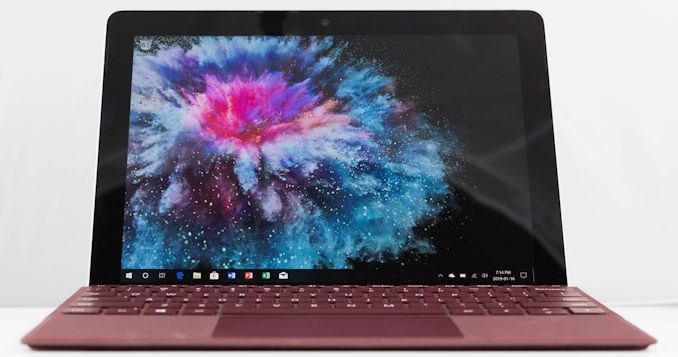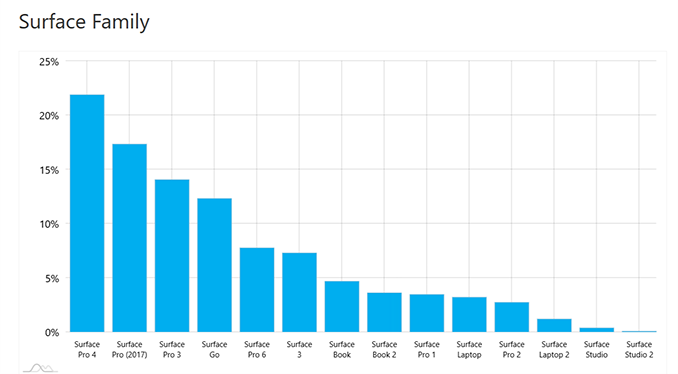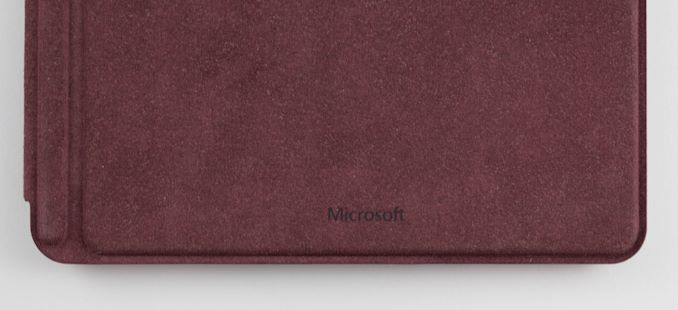The Microsoft Surface Go LTE Review: Unmatched Mobility
by Brett Howse on January 17, 2019 8:00 AM EST
Microsoft’s Surface Pro lineup has been a design win for the company for several years now. The Surface Go was launched in July of 2018 as a lower-cost version of the Surface Pro, offering buyers a less expensive way to become a Surface customer, and by the nature of its smaller size compared to the Surface Pro, an even more portable convertible Surface tablet. When the device was initially announced, a model with LTE connectivity was also in the works, and the Surface Go LTE arrived in November 2018.
Featuring a 10-inch display, the Surface Go is quite a bit smaller than the Pro, and the obvious comparison to make would be against the Surface 3, which launched way back in 2015. In the three year gap between these models, Microsoft had seemed to abandon the idea of the smaller convertible tablet in their lineup. But thanks to the smaller price tag, it was always a popular model, and it is great to see them reintroduce the reduced size Surface again. Even though the Surface 3 launched way back in 2015, it still has a usage share higher than any Surface launched outside of the Pro models, and now the Surface Go.

Source: AdDuplex.com
Looking at numbers from AdDuplex from December 2018, it makes it clear why the Surface Go was launched. And despite it only being on the market for about five months, it’s clearly gained a lot of traction in the Surface market, with usage share outstripping that of every other non-Pro model ever launched. We never got a chance to review the original Surface Go, but Microsoft has sent us the Surface Go LTE model for a full review.
The Surface Go LTE offers the benefit of always-on connectivity – assuming you have cellular coverage of course – and this opens it up to an even wider audience of customers. Microsoft is clearly aiming the Surface Go LTE at business customers looking for a small device they can take on-site, with an even smaller footprint than the Surface Pro LTE, and a lighter form factor. As has been the case with the last couple of LTE variants for Surface, the Surface Go LTE utilizes a Qualcomm X16 modem.
The rest of the Surface Go is unchanged. It’s still powered by the dual-core Intel Pentium 4415Y processor, and has the same 10-inch 1800x1200 3:2 PixelSense display. The only real difference is that the LTE variant is only available with 8 GB of RAM and 128 GB of SSD storage. The 4 GB / 64 GB eMMC model cannot be purchased with LTE.
| Microsoft Surface Go | |||||
| Surface Go Specifications | |||||
| CPU | Intel Pentium Gold 4415Y (Kaby Lake-Y) 2 core, 4 thread, 1.6 GHz base frequency |
||||
| GPU | Intel HD 615 24 EUs 850 MHz boost frequency |
||||
| Display | 10-inch PixelSense 1800x1200 3:2 aspect 216 Pixels Per Inch 10-point Multitouch Surface Pen support |
||||
| Dimensions | 245 x 175 x 8.3 mm 9.6 x 6.9 x 0.33 inches |
||||
| Weight | 522 grams (WiFi) / 532 grams (LTE) 1.15 lbs (WiFi) / 1.17 lbs (LTE) |
||||
| RAM | 4 or 8 GB LPDDR3-1866 | ||||
| Storage | 64 GB eMMC 128 NVMe SSD optional 256 GB NVMe SSD (Commerical Option) |
||||
| Wireless | 802.11ac with Bluetooth 4.1 Qualcomm Snapdragon X16 LTE Optional |
||||
| Battery | Up to 9 hours of video playback 24W Charger |
||||
| Cameras | Windows Hello IR camera 5 MP Front Camera with 1080p video 8 MP Rear Camera with 1080p video |
||||
| Ports | USB Type-C 3.1 Gen 1 with power delivery Surface Connect MicroSD Headset |
||||
| Price | 4GB/64GB $399 4GB/128GB $499 8GB/128GB $549 8GB/128 GB LTE $679 Windows 10 Pro $50 extra |
||||
The Surface Go offers many of the same features as its larger siblings, including the Surface Connect port for charging and data. This is a big upgrade over the Surface 3, which only offered micro USB charging, and the Surface Go ships with a 24-Watt AC adapter. The advantage for business customers here is that the Surface Go will work with the same Surface Dock as the rest of the lineup, meaning it can easily be connected to power, displays, and Ethernet on the desk, and then with one magnetic connector, becomes instantly portable.
The Surface Go also offers USB Type-C, which is a huge advantage for the Surface Go compared to the Surface Pro, since you can use any Type-C charger while on the road with the Surface Go. It does lose the USB Type-A port that is a key feature of the Surface Pro, but on a portable device like this, that is a worthwhile trade-off. If you need Type-A, you can of course get an adapter for Type-C, or use the Surface Dock.
It's been quite remarkable to see just how popular this device is in the market, despite it only being available for a few months. Let’s dig into the Surface Go LTE.











79 Comments
View All Comments
Impulses - Thursday, January 17, 2019 - link
Huh, battery life isn't quite as bad as I thought it was, definitely well under average for the price but I'm still kind of attracted to the unique combination of form factor and capabilities... I don't need a full fledged laptop, but if I'm gonna carry around a convertible like this I'd definitely appreciate x86 compatibility and ease of storage handling vs something like a Chromebook or iPad.How fast can it charge via USB-C?
Archwizard Snim - Thursday, January 17, 2019 - link
I personally checked that USB-PD charging for Surface Go reaches 20V/1A at least, which I think is limited by my cable and charger (or portable battery, for that matter). I once read that the maximum power that goes through the USB-C port is 45W.Even with 20W portable power, however, it's fast enough and doesn't lose the battery even under heavy use. I never even had to worry about battery at all since I always carried the portable USB-PD compliant battery with me.
Smell This - Thursday, January 17, 2019 - link
For reference (and snits and giggles ... )The Bay Trail Preview: Intel Atom Z3770 Tested
https://www.anandtech.com/show/7314/intel-baytrail...
Konservenknilch - Thursday, January 17, 2019 - link
I have the non-LTE version (SSD), very neat little device. Sure, it's not a desktop replacement like its larger siblings, but wonderfully portable and quite speedy.PeachNCream - Thursday, January 17, 2019 - link
Interesting design. Screen bezels don't bother me. Thermal throttling, on the other hand, is an annoyance so I'd happily give up short burst performance for a more consistent experience even if that consistency is considerably slower as a result. That battery life though...I question how the words "unmatched mobility" can be given serious consideration alongside a device that can't even run as long as an old Atom n270-based netbook.TheinsanegamerN - Saturday, January 19, 2019 - link
The short bursts you dislike help to maintain higher battery life numbers. Running slower over a longer period can often wind up using more power in the long run, its why intel started prioritizing turbo boost in the first place.drexnx - Thursday, January 17, 2019 - link
intel needs to stop being ridiculous with their segmentation and let the lower end core stuff turbo in some way, otherwise their (now excellent) atoms will walk all over the bigger cores as we see hereEris_Floralia - Thursday, January 17, 2019 - link
It's hilarious to see Gemini Lake beats Pentium-Y at the same TDP.Lakefield's gonna be very interesting in this area.
Same goes to their Tremont Atoms, if they don't put gimped iGPU in it anymore.
Hopefully AMD is catching up with their newer optimized Raven Ridge.
cpkennit83 - Thursday, January 17, 2019 - link
I assume Gemini at 2.4ghz must be drawing more power than kaby lake at 1.6ghz in the single threaded tests. The 1.6ghz no turbo harness is retarded and even being a lower bin, kaby must be very frugal so far from its upper potential limits.The_Assimilator - Friday, January 18, 2019 - link
> Lakefield's gonna be very interesting in this area.Oh yes. Lakefield absolutely cannot come soon enough.